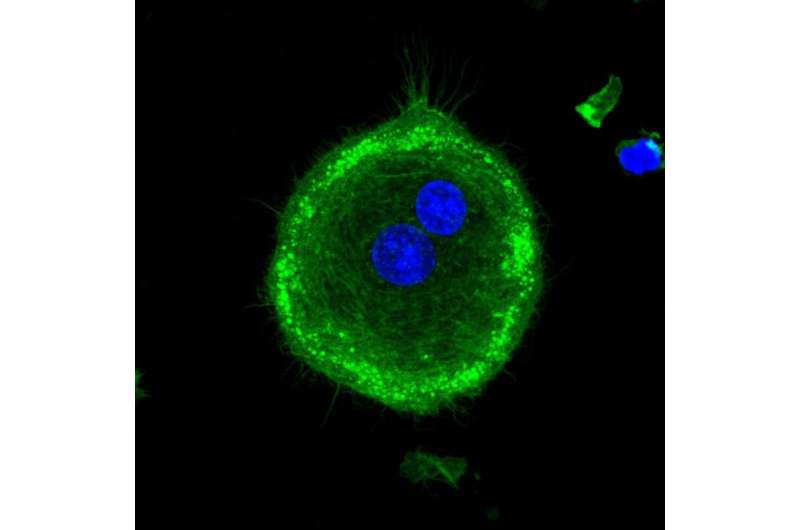Protein Adseverin identified as key factor driving bone loss in osteoinflammatory disease

Adseverin, a protein found in the body, has been identified as the key driver behind the bone loss associated with the world's most common inflammatory disease: gum disease, or periodontitis. The findings, published this month in the FASEB Journal by researchers at the University of Toronto's Faculty of Dentistry, paves the way for new preventive treatment models for this prevalent disease.
More common than arthritis, gum disease affects millions of North Americans each year. In fact, as much as $125B is spent each year in the US in an attempt to tackle periodontitis - considered an "osteoimmune" condition similar to osteoarthritis and osteoporosis - and its attendant complication: bone loss.
"Osteoinflammation produces larger osteoclasts [bone cells]," explains Dr. Michael Glogauer, Professor in the Faculty of Dentistry's Matrix Dynamics research lab and a lead researcher of the study. These "superosteoclasts" cause damage as they form on the bone surface, and, once attached, spit out enzymes that chew away at the bone - and loosen the teeth in the process.
"The larger the osteoclasts, the more efficient they are at resorbing bone," Glogauer describes.
The question has always been, though: why does inflammation create larger osteoclasts?
To find the answer, the group looked carefully at the role of cytokines, chemicals released by cells in the body as part of an immune response. The team discovered that the cytokines spurred the production of Adseverin, and from there, were able to trace a clear role for the protein through study models.
"[Adseverin] appears to be critical for the generation or formation of super large osteoclasts responsible for the rapid bone loss associated with periodontal disease - and potentially other bone-related diseases such as osteoarthritis and osteoporosis," Glogauer states.
But the relative rarity of Adseverin in the body adds fuel to the findings.
"Adseverin has a very limited distribution in the body," he adds, "and very few cells express this protein at significant levels, which make it easier to target from a pharmacotherapeutic standpoint."
"It's an exciting drug target," states Glogauer.
Dr. Chris McCulloch, Professor in the Matrix Dynamics research lab and another lead researcher on the study, agrees. "These findings offer the possibility of looking for new drugs for the treatment of gum diseases."
The study may also offer new insights into bone loss associated with osteoarthritis and osteoporosis.
















